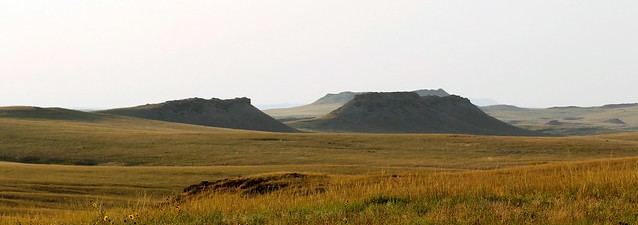
Life on our national grasslands, some of the most distinct and treasured ecosystems in the world, depends on regrowth from buds, rather than seeds. Those endless expanses of grass exist because of plant buds, and at this time of year grasses have finished forming buds beneath the earth’s surface, where they will overwinter until spring.
“Almost all life on grasslands depends on below-ground buds; they are why we have grasslands,” said Jacqueline Ott, research ecologist with the U.S. Forest Service (USFS)-Rocky Mountain Research Station (RMRS) Forest and Grassland Research Laboratory in Rapid City, S.D.

These buds will provide a necessary source of forage and habitat for livestock and wildlife. Pollinators, too, depend on a diversity of forbs. The greater sage-grouse and other birds require sagebrush and forbs for food, nesting, brood-rearing, and winter habitat.
At one time, grasslands covered some 500,000 square miles in the United States. About 10,000 square miles remain, and about 6,000 square miles of those comprise our national grasslands.
With funding in place from the Joint Fire Science Program, Ott and other scientists from universities and federal agencies are launching a three-year study on the effects of disturbances on these important buds.
Their research will bring new perspective. What we know of fire and grassland regeneration comes largely from research on tallgrass prairies, which receive more precipitation and have different species than the shortgrass steppe and mixed-grass prairies that occupy much of the national grassland landscape.
This new study will cover where grasslands meet sagebrush-dominated plant communities in the West and will be conducted on two national grasslands – Buffalo Gap National Grassland in Hot Springs and Wall, S.D. and Thunder Basin National Grassland in Douglas, Wyo. – and findings will apply to all grasslands.
“The study will help us learn more about ways to use fire on our national grasslands to maximize positive outcomes and minimize negative ones,” said Lauren Porensky, ecologist with the USDA-Agricultural Research Service in Ft. Collins, Colo.
Scientists will look at varying soil temperatures, fire intensities and community composition of plants affect the re-sprouting of native and invasive plant species both immediately after a fire and also several months later. Post-fire environmental conditions, such as drought, will also be considered.
Most importantly, scientists will study the response of invasive annual bromes to different fire conditions in the northern Great Plains before annual brome invasion reaches levels comparable to those of the heavily invaded American West.
Fire has always been an essential source of grassland management. Lightning frequently sparked fires encountered by early settlers. Native Americans used fire as a tool for driving game and stimulating new plant growth. More recently, prescribed burning has been used in place of wildfires to improve habitat for threatened species and promotes forbs, tallgrasses, wildflowers and other plants. Burning recycles nutrients through the soil and minimizes spread of diseases in animals and plants.
Scientists will work at the RMRS lab in Rapid City, S.D. and across western South Dakota and eastern Wyoming. Field sites will be located on a combination of public (USFS, National Park Service) and private lands. Findings will be presented in 2020 in webinars, extension publications, scientific journals and talks.


